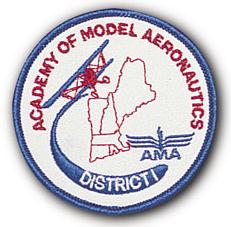FAA MISREPRESENTS THE FACTS ABOUT 336 AT THE HOUSE JULY 11, 2018 MEETING by Andy Argenio The statement made by the FAA at the July 11, 2018 roundtable meeting of the U.S. House Aviation Subcommittee on Counter Unmanned Aircraft Systems (UAS) was a misrepresentation of the facts to the committee and the public. The FAA stated that three policies are needed to greatly reduce the incidence of hazardous UAS operations while enhancing the effectiveness of our security partner’s efforts to counter these hazardous operations when necessary. | Watch video of Counter Unmanned Aircraft Systems Roundtable Discussion |
The policies mentioned by the FAA were a universal requirement for UAS registration, remote pilot identification and compliance with basic airspace rules and were said to be necessary conditions for safe and secure integration. The FAA then claimed that the current exemption for model aircraft, Public Law 112-95 section 336 of the FAA Modernization & Reform Act of 2012 is the fundamental barrier to effective implementation of these policies and presents an insurmountable challenge to the FAA, National Defense, Homeland Security, and Law Enforcement partners as they look to enable the benefits of UAS Technology while maintaining safety for American people. What follows are facts that will debunk the FAA claims: First, the registration rule was signed into law on December 12, 2017 as part of the National Defense Authorization Act and 336 remote pilots who are required to be AMA members under the same Public Law have acquired FAA registration numbers and affixed them to all their model aircraft. We have heard of no FAA violations/prosecutions or citations being issued by law enforcement for non-compliance of registration by 336 operators. The 336 exemption doesn’t pose any barrier to the registration policy which is already in effect for 336 remote pilots. Second, remote pilot identification is being considered in legislation and the AMA recognizes that it would enhance safety and compliance by allowing for in flight identification of UAS being operated in non-permitted and unauthorized locations. However, all 336 remote operators are already required under the same Public Law and the AMA to conduct recreational flight operations within visual line of sight (VLOS) and only at permitted locations. So again, 336 doesn’t remain a barrier to enacting remote identification requirements for all UAS that have the capability to fly and be navigated beyond VLOS. Most everyone understands that model aircraft flown within VLOS allows for easy identification of the remote pilot by authorities or anyone who sees the aircraft can see the remote pilot as well. AMA pilots have been operating model aircraft safely and responsibly for 82 years within VLOS and since 2012 within the provisions of 336. Third, Congress doesn’t need to do away with the Section 336 exemption since it presents no barrier to safe UAS operations by 336 operators and it only applies to recreational remote pilots who are operating their model aircraft within the programming of a nationwide CBO/AMA set of safety guidelines. Section 336 as codified into law in Part 107 for commercial UAS flight operations includes subsection Part 101 and both Part 101 and Part 107 allow for recreational flying of model aircraft. Under current FAA sUAS regulations only about 15% of remote pilots operating sUAS/model aircraft are exempt from FAA regulations under the provisions of Section 336/Part 101, and they (CBO/AMA members) have an exemplary record of safe and responsible recreational flying. Nearly 85% of the more than 1 million recreational remote pilots who are not flying under Section 336/Part 101’s exemption are in violation of FAA Part 107 since they are neither 336 remote operators or Part 107 remote pilots operating model aircraft for a hobby/recreation. The FAA has failed to enforce the existing Part 107 sUAS law. Doug Johnson (VP Technology Policy & Consumer Technology Association) who was a panel member at the roundtable House of Representatives meeting posed the correct answer to FAA sUAS issues and it wasn’t doing away with 336. He said the FAA and others need to support passage of the pending legislation for creating a Part 107 “Lite” version of sUAS regulations to make it easier for the hundreds of thousands (actually nearly 1 million now) sUAS/drone recreational remote pilots to have a means of complying with FAA requirements that are appropriate for a recreational consumer hobby user. This would allow for the million rouge sUAS remote pilots to pass a basic FAA Part 107 “Lite” test of regulations for recreational flying of sUAS. NO REMOVAL OF 336 EXEMPTION FOR AMA COMPLIANT REMOTE PILOTS IS NECESSARY! PS: This message from AMA D1 VP may be shared with anyone. |


